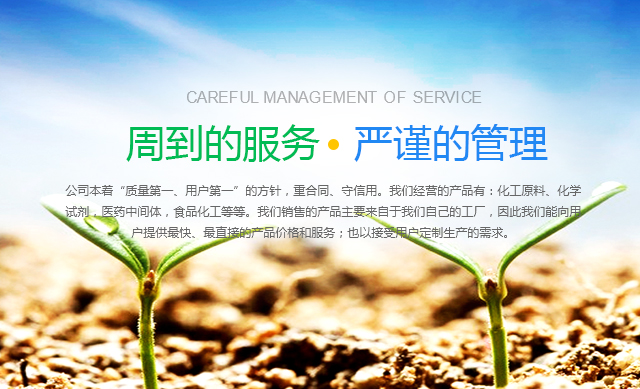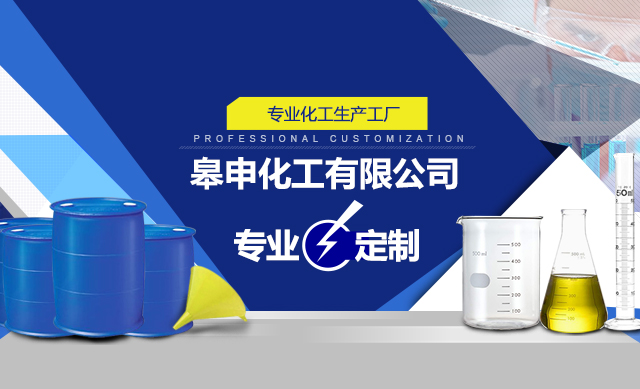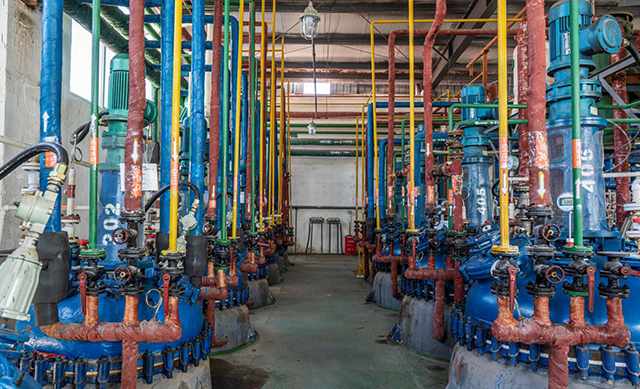Biomedical materials are essential for ensuring human health. With the tremendous success of clinical applications, a high-tech biomedical material industry has formed and developed into the most vibrant sunrise industry in the world economy. This article analyzes the current situation, key products, and development trends of the biomedical materials industry and technology both domestically and internationally, and points out the problems that exist in China's biomedical materials industry, which has important reference significance.
Biomedical materials, also known as biomaterials, are a type of high-tech new materials used for diagnosis, treatment, repair, or replacement of human tissues or organs, or to enhance their function. They can be natural, synthetic, or a combination of them. Biomedical materials are not drugs, and their effects do not need to be achieved through pharmacological, immunological, or metabolic methods. They cannot be replaced by drugs and are essential for ensuring human health. However, they can be combined with them to promote their functional realization. According to international practice, its management belongs to the category of medical devices, accounting for over 40% of the medical device market share.
1、 Overview of Biomedical Materials
The research and development of biomedical materials must have clear application goals. Even materials with the same chemical composition have different application purposes, which not only require different structures and properties, but also different manufacturing processes. Therefore, the science and engineering of biomedical materials are always closely related to their end-use products (generally referring to medical implants). When it comes to biomedical materials, it refers to both the materials themselves and medical implant devices.
According to the composition and structure of materials, biomedical materials can be divided into medical metals, medical polymers, bioceramics, medical composite materials, biological derived materials, etc. According to clinical applications, it can be divided into orthopedic materials, cardiovascular and cerebrovascular system repair materials, medical consumables such as skin masks, medical catheters, tissue adhesives, blood purification and adsorption, soft tissue repair and plastic surgery materials, dental repair materials, implantable microelectronic active instruments, clinical diagnostic materials such as biosensors, biological and cell chips, and molecular imaging agents, drug controlled release carriers and systems.
Although modern biomedical materials only originated in the mid-1940s and the industry was formed in the 1980s, they have achieved great success due to the huge demand for clinical applications and the drive of scientific and technological progress. Its application not only saves the lives of millions of critically ill patients, significantly reduces the mortality rate of major diseases such as cardiovascular disease, cancer, and trauma, but also greatly improves human health and quality of life. At the same time, its development is playing a guiding role in the innovation of contemporary medical technology and the reform of the medical and health system, and significantly reducing medical costs. It is an important material foundation for solving the current difficulty and high cost of medical treatment and building a harmonious and stable well-off society.
With the tremendous success of clinical applications, a high-tech biomedical material industry has emerged, which is a typical emerging industry with low raw material consumption, low energy consumption, and low environmental pollution (a drug eluting coronary stent priced at over 5000 yuan, with a stainless steel usage of only ≈ 100mg, and a global stainless steel usage of no more than 1 ton), as well as high-tech added value (knowledge costs can reach 50-70% of the total cost), In the past decade, the medical device industry in the United States has continued to grow at an annual growth rate of over 20%. Despite the global economic recession caused by the international financial crisis in recent years, the annual growth rate of 7% was still maintained in 2009, indicating that its development is minimally affected by the external environment and is of great significance to the national economy and security. It is the most dynamic sunrise industry in the world economy.
Biomedical materials are the most extensive interdisciplinary field in contemporary science and technology, involving materials, biology, medicine and other related disciplines. They are the important foundation of biotechnology and biomedical engineering, the two pillars of modern medicine. Due to the progress of contemporary material science and technology, cell biology and molecular biology, deepening the understanding of the interaction between materials and organism at the molecular level, coupled with the progress of modern medicine and the driving force of huge clinical needs, contemporary biomaterial science and industry are undergoing revolutionary changes, and have been on the verge of achieving significant breakthroughs regeneration of human tissue, further, the entire human organ, Open the door to the transformation of inanimate materials into living tissues. In the situation where the conventional high-tech biomedical material market in China is basically monopolized by foreign investors, seizing the favorable opportunity of revolutionary changes in biomaterial science and engineering, looking forward to the world's biomaterial science and industry in the next 20-30 years, and deliberately improving innovation capabilities, not only can we win rare opportunities for revitalizing China's biomaterial science and industry and catching up with the world's advanced level, And Chinese scientists can make tremendous contributions to the development of human science.
2、 Current Status and Development Trends of Biomedical Materials Industry and Technology in Foreign Countries
1. Industry status, scale, competitive advantages, and development trends
With the aging population, the increase in trauma among middle-aged and young people, the injection of high-tech, and the increasing concern for human health with economic development, the biomedical materials industry has developed rapidly. From 2000 to 2010, the global market compound growth rate (CAGR) was over 22%, and in 2010, the global market reached US $152 billion yuan. It is expected that the market CAGR will remain around 15% from 2009 to 2020. In 2015, the world market can reach over US $305 billion yuan, and in 2020, it will reach over US $614 billion yuan. At the same time, it will drive the new output value of related industries (excluding healthcare) by about three times, and the total direct and indirect sales in 2015 and 2020 can reach 4%, respectively × US $305 billion ≈ US $1220 billion, and US $2456 billion. Compared with 2010, 2015 and 2020 can add over 2 million and 6 million new jobs respectively (based on the fact that for every new job added in the US medical device industry, an additional 1.5 supporting industry jobs will be added, with approximately 2.5 million global jobs in 2010) (Figure 1). At the same time, it is also the most active field in world trade, with a compound annual growth rate of 25%, and is growing into a pillar industry of the world economy.
The world's largest producer and consumer of medical devices is the United States, which accounted for about 40% of the global market in 2010 and consumed 37% of global products, with an annual growth rate of about 8%; Due to its developed economy and sound social medical security system, the European Union has become the world's second largest medical device market, accounting for 29% of the global market share; The Asia Pacific region is the third largest market in the world, with an 18% market share. Japan is the most advanced and rapidly developing country in medical technology in the Asia Pacific region, and is the third largest consumer of medical devices in the world. China and India have the most growth potential and space, as they have the largest population and their healthcare systems are still developing and not yet mature. There is also great room for improvement in healthcare systems in Southeast Asian countries, Therefore, the market will continue to grow; Latin America is another region with the fastest growth, with countries such as Mexico, Brazil, Argentina, and Chile gradually developing towards industrialized countries. It is estimated that the demand for medical devices will also maintain a significant growth rate in the future.
The biomedical materials and implantation device industry is a high-tech industry with the most interdisciplinary and knowledge intensive industries. Its development requires the support of upstream and downstream knowledge, technology, and related environments. Most of them are concentrated in areas with concentrated economy, technology, talent, or clinical resources. High industrial agglomeration is an important characteristic of the medical biomedical materials industry in developed countries. For example, the United States is concentrated in Silicon Valley, Highway 128 Technology Park, North Carolina Research Triangle Park, and Minneapolis and Cleveland Medical Centers with abundant clinical resources; Germany is concentrated in areas such as Ereland, Thuringia, and so on; Japan gathers in Tsukuba, Kanagawa, Kyushu Science and Technology Park, etc.
The highly concentrated (monopolistic) industry and the diversification or diversification of products are another characteristic and trend of the development of the biomedical materials industry.
In 2010, the world medical device industry was composed of 27000 medical device companies, of which over 90% were small and medium-sized enterprises. Small and medium-sized enterprises in developed countries mainly engage in the research and development of new products and technologies, and maintain their survival by transferring technology to large companies or being merged by them. Large scale product production and market operations are basically carried out by large companies. Unlike the "large, small, and scattered" medical device enterprises in China, the medical device industry in developed countries has formed a situation of "oligopoly" rule, and the global market has also shown a similar pattern. In 2009, the top 50 multinational corporations accounted for 88% of the global medical device market, with the top 25 companies accounting for 75%; In 2008, six American and British companies, DePuy, Zimmer, Stryker, Biomet, Medtronic, Synthes Mathys, and Smith&Nephew, accounted for approximately 75% of the global orthopedic materials and equipment market, with the top four American companies and Smith&Nephew in the UK accounting for 90% of the artificial joint market; Six major companies: Johnson&Johnson, Abbott, Boston Scientific, Medtronic, CR Bard (USA), and Terumo (Japan) hold 80-90% of the market for cardiovascular and cerebrovascular system repair materials and implant devices; Five major companies: Baxter International (USA), Fresenius (Germany), Gambro (Sweden), Terumo, and AsahiMedia (Japan) account for 80% of the market for blood purification and extracorporeal circulation system materials and devices; The dental implant and dental material market is basically monopolized by major companies such as Straumann (Switzerland), Dentsply International (United States), Nobel Biocare (Germany), and Osstem (South Korea). In order to improve market competitiveness and maintain advantages, mergers and integration of the world medical device industry has been going on. Only during 1998-2009, the average annual mergers and acquisitions in the U.S. industry reached 200. The increasing concentration ratio or monopoly of the industry is an important trend for the development of the biomedical materials industry.
The biomedical materials industry is different from the home appliance or communication industries, with a small market capacity for a single product, and the vast majority of single product sales are less than US $10 billion. In order to enhance the competitiveness of enterprises in the market, avoid risks, and develop and strengthen enterprises, foreign multinational corporations have gone from initially producing relatively single products to continuously extending and expanding their product production lines through internal technological innovation and mergers and acquisitions of other enterprises, achieving multi variety production. For example, from 2004 to 2009, the number of mergers and acquisitions related to GE in the United States reached 59; For another example, Medtronic, the fourth largest medical device manufacturer in the world, established in 1949, has developed from the original production of cardiac pacemakers to the production of multi category products, covering arrhythmia, heart failure, vascular diseases, artificial heart valves, extracorporeal heart support systems, minimally invasive heart surgery, malignant and non malignant pain, dyskinesia, diabetes, gastrointestinal diseases, spinal diseases The company's annual sales of products for disease treatment in many fields, such as nervous system disease and facial surgery, increased from US $12 million in 1968 to US $15.9 billion in 2010. The compound growth rate of revenue has reached 11%, and the compound growth rate of profit has reached 10%. In recent years, most of the company's revenue has come from the sales of new products. About two-thirds of the company's sales come from new products developed and developed in the past three years. The R&D expenditure has reached 10% of the sales, The total amount of company merger and acquisition expenses from 1999 to 2011 reached US $15.3 billion yuan (Table 1).
Internationalization of production and sales is a prominent trend in the development of biomedical materials. Almost all large enterprises in biomedical materials are multinational corporations, with a significant portion of their sales coming from the international market, such as Johnson&Johnson in the United States in 2010, with 40% of sales (US $13.2 billion), 46% of Boston Scientific's sales (US $3.59 billion), and 43% of Medtronic's sales in 2011 (US $6.837 billion) coming from overseas markets.
In order to explore the international market, multinational corporations establish subsidiaries and research and development centers overseas by exporting technology and funds, and conduct on-site production and research and development. At the same time, in order to adapt to the development of international trade, the International Organization for Standardization (ISO) continuously formulates and publishes international standards for biomedical materials and products.
2. Key products, core technologies, and their development trends
The development of the biomedical materials industry strongly relies on the support of advanced technology and economic strength in related fields. The rapid development of medical devices in the United States and its leading position in the world are due to its support for the development of the medical device industry in the fields of space technology technology, biotechnology, microelectronics, precision processing technology, software development, and good policy environment. At present, developed countries rely on their top technological innovation and economic strength to mainly produce high-tech biomaterials and implant devices. labor-intensive and resource consuming enterprises have gradually shifted overseas, making their technological equipment very advanced. Various high-end machining centers, specialized machine tools, laser micro processing and coating equipment have been equipped in biomaterials enterprises; Automation and information technology have been widely applied in production; The most advanced inspection equipment can be seen everywhere in large companies. Advanced technology and equipment ensure the progressiveness of its products and its monopoly position in the market.
Biomedical materials industry is an emerging industry, and its product and technology upgrading cycle is short, usually only about 10 years. In order to maintain the progressiveness of technology and the market competitiveness of products, technological innovation and upgrading are the basis for its survival and further development. For this reason, developed country enterprises are continuously increasing their investment in research and development, second only to new drug research and development, accounting for 11% -13% of their sales, and continue to grow.
Although the application of biomedical materials has achieved great success, long-term clinical applications have also exposed many problems, particularly in terms of functionality, immunity, and service life, which cannot meet the requirements of clinical applications well. For example, the mortality rate after 12 years of heart valve implantation is 58%, the restenosis rate after vascular stent implantation is ≈ 10%, and the effective period of artificial joints is 12-15 years in the elderly group, and only ≈ 5 years in the young and middle-aged group. The fundamental reason is that the material or implant is basically a foreign object present in the body. Contemporary medicine has developed towards the regeneration and reconstruction of human tissues or organs, or the restoration and enhancement of their biological functions, personalized and minimally invasive treatment. Traditional biomedical materials are no longer able to meet clinical requirements. Empowering materials with biological structures and functions, fully mobilizing the human body's self-healing ability, regenerating and rebuilding damaged human tissues or organs, or restoring and enhancing their biological functions, to achieve permanent rehabilitation of damaged tissues or organs, has become the development direction of contemporary biomedical materials. The main cutting-edge areas focus on materials and implant devices that can induce the regeneration of damaged tissues or organs (including tissue engineering products); And targeted controlled release carriers and systems for drugs and bioactive substances (vaccines, proteins, genes, etc.) used to treat incurable diseases, restore and enhance the biological function of tissues or organs. The cutting-edge research on biomedical materials and implant devices is constantly making significant progress. The US FDA has approved the launch of 7 tissue engineering products, while the SFDA in China has approved the launch of bone induced artificial bone and tissue engineering skin that can induce bone regeneration. Seven tissue engineering product standards have been issued, and one major








